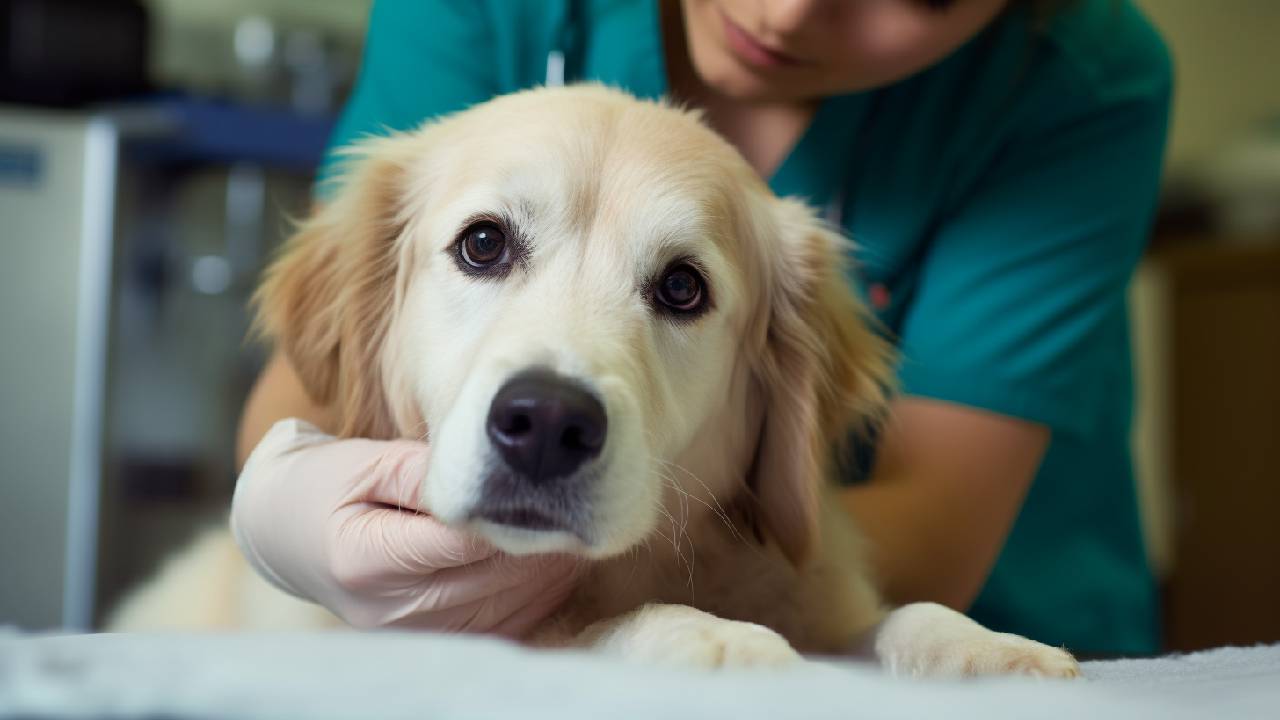Deciphering between ear mites and yeast infections can be tricky. Ear mites are external parasites craving a warm ear residence. The tell-tale sign? A residue that mimics coffee grounds in the ear canal. Yeast infections, in contrast, leave behind a waxy, yellowish residue paired with a distinct yeasty scent.
The Ideal Dog Yeast Infection Treatment
Managing a dog with a yeast infection can be challenging, especially with many home remedies flooding the internet. However, while these remedies might provide temporary relief, they may not address the root cause or might even exacerbate the condition. Hence, always prioritize a visit to the vet.
After a thorough examination, your vet’s clinic will offer a tailored treatment plan best suited for your pup’s specific needs. Here are some of the most commonly prescribed treatments:
- Oral or topical antifungal meds: These aren’t just your average pills or creams; they are specialized medications engineered to halt yeast growth in their tracks. Acting as yeast-busters, they focus on restoring the natural balance of your dog’s skin.
- Medicated shampoos: These go beyond the standard cleaning and are laced with ingredients that combat yeast. They fight the fungal menace and offer a soothing experience for your dog’s inflamed skin, giving it the relief it desperately needs.
- Specific ear drops: The ears can be a hotspot for yeast proliferation. These drops cleanse and combat any yeast in your dog’s ears, ensuring the ear environment becomes hostile to yeast growth.
- Relief ointments: Beyond battling yeast, providing immediate comfort to your dog is essential. These ointments aim to offer just that. They are crafted to tackle the persistent itch, reduce inflammation, and calm the affected areas.
Remember, while over-the-counter treatments might seem convenient, only a vet can determine your pet’s best action. Every dog is unique; what works for one might not necessarily work for another. Stick to the vet’s recommendations and monitor your pet’s progress to ensure they’re on the path to recovery.

Tried and Tested Home Remedies for Yeast Infections in Dogs
Venturing into home remedies? Here’s a deeper dive into some popular options:
- Apple cider vinegar (diluted): Revered for its antibacterial and antifungal properties, a gentle ACV rinse can help restore the skin’s pH balance. Ensure it’s diluted to prevent stinging.
- Coconut oil: More than just a kitchen staple, coconut oil boasts medium-chain fatty acids that exhibit antifungal properties. Massaged onto affected regions can combat yeast and moisturize the skin.
- Plain yogurt: An unsung hero, plain yogurt introduces beneficial bacteria to your dog’s system. Acting as a probiotic powerhouse, it can neutralize yeast overproduction and aid in digestive health.
- Aloe vera: The soothing touch of aloe vera gel can offer respite from itching and inflammation. It’s hydrating and can promote faster healing.
- Oatmeal baths: An oatmeal soak can offer dual benefits: soothing irritated skin while acting as a gentle cleanser. Ensure the water is lukewarm and the oatmeal is finely ground.
Yeast Infection Prevention in Dogs
An ounce of prevention is worth a pound of cure. Regular grooming is paramount, especially for breeds with dense fur or skin folds. A balanced diet, fortified with essential nutrients, protects against health hitches. Always ensure their habitat is moisture-free and well-ventilated. Frequent vet visits for routine checks can detect and deter potential triggers.
Wrapping up with this knowledge and a vigilant eye, you’re all set to ensure your furball stays healthy, comfortable, and ever-ready for belly rubs and park visits! 🐾

FAQs
How do I know if it’s a yeast infection, not just a rash?
A yeast infection typically has a distinct yeasty odor, whereas a simple rash might not have a specific smell. Additionally, yeast infections tend to cause a waxy buildup, especially in the ears. It’s always best to consult a vet for a proper diagnosis.
Are certain dog breeds more prone to yeast infections?
Yes, certain breeds, especially those with wrinkled skin like Bulldogs, Pugs, and Shar-Peis, or breeds with floppy ears like Cocker Spaniels and Basset Hounds, might be more susceptible due to moisture getting trapped easily in their skin folds or ears.
Is it contagious? Can my other pets get it?
While the specific yeast that causes infections in dogs usually isn’t contagious to other dogs or cats, it’s always a good practice to monitor all pets for symptoms and maintain a clean environment to minimize the spread of any ailment.
How long will it take for my dog to recover from a yeast infection?
Most yeast infections improve within a week of appropriate treatment. However, the total recovery time can vary depending on the severity of the infection and the dog’s overall health. Consistent treatment and follow-ups with a vet are crucial.
Can I use human antifungal creams on my dog?
It’s essential to be cautious when using human medications on pets. Some ingredients might be toxic to dogs. Always consult your vet before applying any over-the-counter human medications to your dog.
Does a yeast infection affect a dog’s appetite or behavior?
While the primary symptoms are skin-related, a severe yeast infection might cause discomfort or pain, leading to reduced appetite or changes in behavior. If your dog appears lethargic or refuses to eat, it’s essential to seek veterinary advice promptly.
Can diet changes help prevent yeast infections in dogs?
Absolutely! A well-balanced diet can boost a dog’s immune system, making it harder for yeast to overgrow. Some experts also believe reducing sugar and carbohydrates in your dog’s diet can help since yeast feeds on sugars. Consulting with a vet about dietary changes is always a good move.






with a stubborn yeast infection we’ve tried medicated shampoos, but it keeps coming back. Any other remedies we can explore? 🛁🐕
The medicated shampoo worked wonders